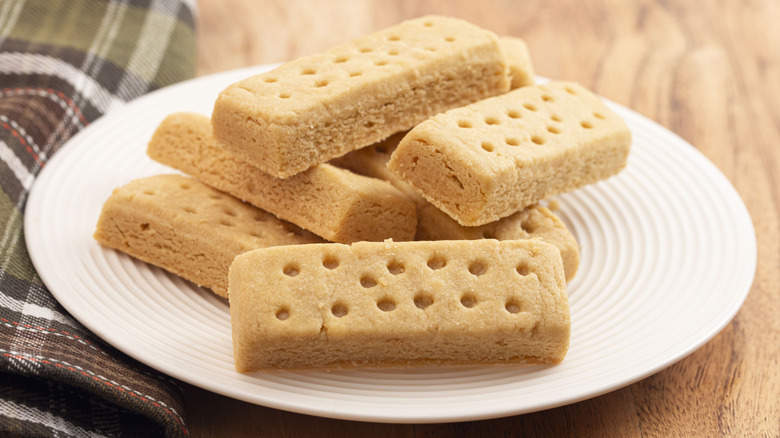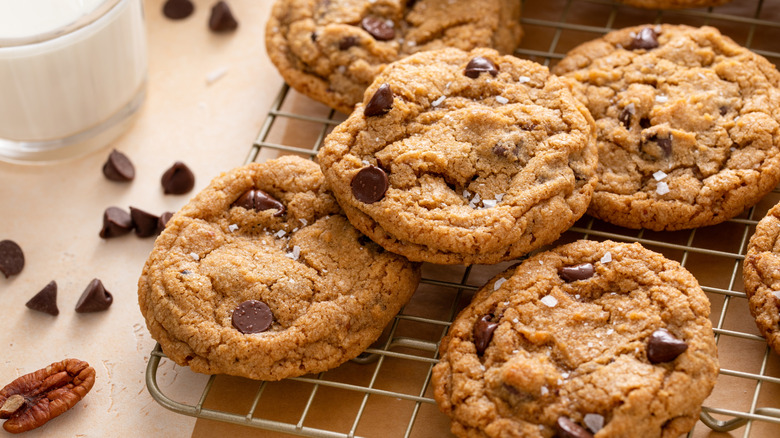What Is The 1-2-3 Rule For Making Cookie Dough, And Does It Actually Work?
Store-bought cookies are great, and even Ina Garten has her favorite brand, but they simply can't compete with the taste and freshness of well-made homemade cookies. The best part? You don't have to be a pro to pull off great cookies. Even the greenest amateur bakers can create bakery-worthy cookie dough by following the 1-2-3 rule. To find out more, Food Republic consulted Marissa Stevens, founder and recipe developer at Pinch and Swirl, who explained this simple hack: "The 1-2-3 rule is a simple weight ratio: 1 part sugar, 2 parts fat, 3 parts flour." Sticking to this simple ratio will give you a reliable base for perfect cookies every time.
"Shortbread dough made [this method] famous, but it's a good place to start for experimenting with other cookie dough styles too." Shortbread is a unique cookie known for its crumbly texture and rich, buttery flavor — the butter being the "fat" in this formula. While shortbread is the classic example of the 1-2-3 ratio, Stevens noted that this recipe is a great jumping-off point for experimenting with other cookie styles.
What makes this rule so appealing is its simplicity. The formula is easy to remember, and scales effortlessly if you need a bigger batch, and most importantly, it teaches you how ingredients interact. "I like the concept because it gives new bakers a sense of ingredient balance," Stevens told us. Once you understand the balance of ingredients in your cookie dough, it's super easy to customize and put your own spin on it, making it both foolproof and flexible for bakers at any level.
How do you adjust the 1-2-3 ratio?
When applying the 1-2-3 ratio to baking cookies, "[it] gives you a pretty dry dough and a crisp, crumbly cookie," recipe developer Marissa Stevens told us. "You can't use it as a universal rule instead of a foundation," she added. This reflects its traditional usage as a ratio for a perfect shortbread, but if your goal is a cookie with a different texture -– like chewy, crisp, or soft — you're definitely going to need other add-ins to build upon the foundation the 1-2-3 rule sets up. "For chewy or soft cookies, you'll need to add moisture (like egg yolks) and typically a leavening agent," Stevens told us.
"Small changes — an egg yolk, a spoonful of brown sugar — can dramatically shift texture without throwing off the balance," she added. Moisture can take the form of egg yolks, buttermilk, or even mayo – a common ingredient to add moisture to cakes, which gives the cookies a softer, fudgier texture. Leavening agents like baking soda and baking powder will allow the cookies to rise, giving them a soft, tender mouthfeel as opposed to the extremely dense texture that makes shortbread so famous.
To make sure the 1-2-3 ratio works, Stevens recommended that bakers don't "[skip] the scale. This ratio only works when you're measuring by weight; volume measurements throw it off completely." So a kitchen scale is a non-negotiable here, as using volume metrics (such as measuring cups) can easily tip the balance in the wrong direction, completely throwing off the foundation of your cookies before you even have a chance to adjust your ingredients.


